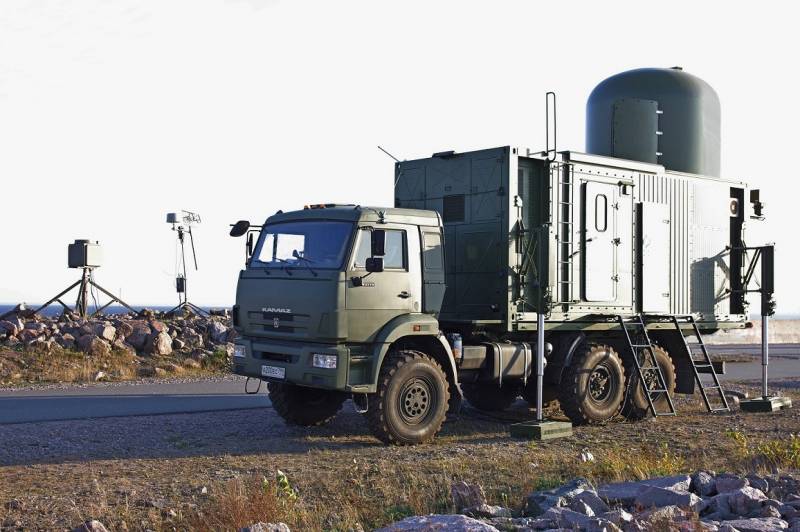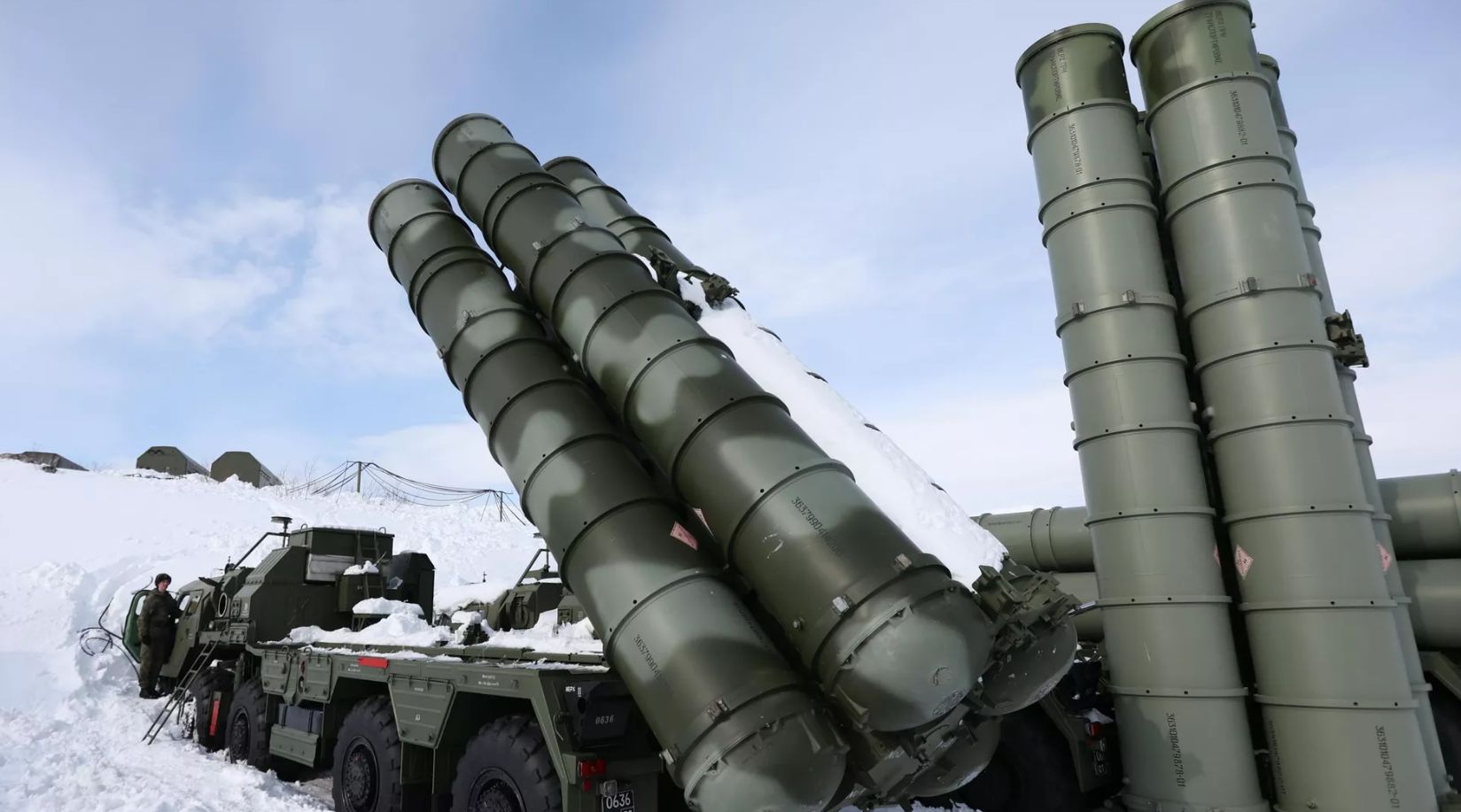Article Modified With New Headlines, Updates
Russia has completed the production of the Yenisei autonomous target identification system and the Valdai radar system amid the mounting threat posed by Ukrainian UAVs and long-range missiles,
The completion of the autonomous target identification systems and the radar systems was communicated to Russian Defense Minister Sergei Shoigu by the Director General of the Almaz Research and Production Association, Gennady Bendersky, on March 6. Shoigu was on a visit to inspect the fulfillment of the state defense order by Almaz-Antey Corporation.
The Director General said that the company had developed new means of combating unmanned aerial vehicles, which were currently undergoing factory tests. While the Yenisei autonomous target designation supports the operation of the S-400 anti-aircraft missile system, the Valdai radar systems help to detect and counter UAVs.
Other than this, the information on these two systems remains classified, and little is known about them. However, reports in local Russian-language media that cite open-source intelligence say that the Yenisei was developed for the S-500 air defense system and could augment the capability of the S-400 air defense systems.
According to some reports, with a range of up to 600 kilometers and an altitude of up to 100 kilometers, the multifunctional Yenisei radar can identify and track aerodynamic and ballistic targets. The command post receives the target data which is then transferred for use to other components working in tandem to track and eliminate a target.
Video from Shoigu's visit today to NPO Almaz and the “Avangard" Moscow Machine-Building Plant, subsidiaries of Russia’s Almaz-Antey.https://t.co/XbWlAQV5Tshttps://t.co/uW3LRTZlWi pic.twitter.com/c5drc8JGfV
— John Hardie (@JohnH105) March 6, 2024
Much improved target discrimination is possible with Yensei’s dual-band phased locator, which also removes decoy deception tracks. For electronic eavesdropping and aerial monitoring, the Yenisei also features a passive mode of operation. In the latter instance, it can transmit targeting data to trigger the S-400 / S-500 systems’ multifunctional radars for target engagement.
After launch, the Yenisei is allegedly capable of tracking its air defense missiles and determining precisely whether the target has been hit. There are unverified claims that the station can also identify hypersonic projectiles. The system was reportedly inducted into service in 2021.
“In addition to 360-deg surveillance capability, the radar has a stop and stare, sector view capability to detect even small-sized hypersonic targets, ” wrote military expert and avid watcher of Russian military affairs Squadron Leader Vijainder K. Thakur, a frequent contributor to EurAsian Times.
The Valdai radar system, according to local Russian reports, has been designed to identify and track targets with incredibly low radar cross-section. This particular radar can distinguish very small UAVs from other aerial objects, which is necessary for accurately suppressing and neutralizing them.
The Valdai system is mounted on a three-axle self-propelled vehicle with a container body. The complex’s structural components include a radar module, an optoelectronic module, a control module with a remote-control panel, a direction-finding module for radio signal sources, and a countermeasure module. It also offers communication capabilities, power supply, etc., on its own.

The Optoelectronic detection, radio direction, and radar are all combined in the vehicle-mounted system. It is made up of a three-dimensional X-band radar that can scan 360 degrees in azimuth and 0 to 30 degrees in elevation. There is a 300 m minimum detection range.
The radar runs in tandem with a radio signal direction-finding module to locate UAVs and their operators, as well as to identify the control and communication channels of the drone. The device guides a thermal imaging camera toward a target it finds using radio direction or radar. The optoelectronic module carries out target tracking and countermeasure efficacy evaluation.
A jammer module in the counter-drone system can block navigation and control signals. It is possible that the technology also has a projectile or net-style physical target drone-disabling capability. Like the Yenisei, the Valdai was also reportedly inducted in 2021. EurAsian Times could not corroborate any of these claims.
Shoigu underscored the significance of the surface-to-air missile system in the so-called ‘special operation zone’ while emphasizing the utility of both radars as well as weapons. He also stated that the range of weapons the Russian air defense systems are supposed to counter was expanding by the day.
“We can see that the enemy possesses FPV drones, attack unmanned aerial vehicles of longer range and higher power, HIMARS missiles, and also Soviet-designed weapons. Naturally, we have to decide how to counter them. This is the task your enterprises are to fulfill,” he was quoted as saying by the Russian Defense Ministry.
The announcement comes at a time when Ukraine has intensified its drone attacks against Russian facilities, far behind the frontline, making it imperative for Russia to augment its air defenses.

10,000 More Drones for Ukraine
During a recent visit to Ukraine, Secretary of State for Defense of the United Kingdom Grant Shapps announced that the UK would be supplying the Ukrainian armed forces with 10,000 drones.
According to Shapps, the United Kingdom would deploy the drones as part of a new £325 million military aid package. The majority of the drones are first-person view drones, mostly used for reconnaissance. According to the UK Military of Defense, about 1,000 of the 10,000 drones are “one-way attack drones.”
“I am ramping up our commitment to arm Ukraine with cutting-edge new drones coming directly from the UK’s world-leading defense industries — from the factory floor to the frontline. I encourage international partners to join the U.K. in this effort,” Shapps said in a statement.
In the Ukrainian conflict, drones have become an indispensable tool for both attack and surveillance missions, making up for Kyiv’s relative lack of ground forces. Ukraine President Volodymyr Zelenskyy announced in February the creation of the “Unmanned Systems Forces,” a new division of the Ukrainian armed forces that will unify drone operations for the military under a single command.
⚡️Testing of the 🇺🇦Ukrainian heavy drone of the "Baba Yaga" type pic.twitter.com/kku850PZDs
— 🇺🇦Ukrainian Front (@front_ukrainian) March 7, 2024
In the first week of 2024, 73 Russian tanks, as well as air defense systems, fuel storage depots, and several other high-value targets, were destroyed by Ukraine’s drone units, according to Mykhailo Fedorov, Minister of Digital Transformation.
Drones with a longer range are currently being used to hit key targets deep within Russia, such as infrastructure related to the energy sector and military manufacturing facilities.
Denys Shmyhal, the Prime Minister of Ukraine, stated that at the beginning of 2024, over 200 enterprises were manufacturing drones in his country. Ukrainian officials have set a goal of producing one million or more drones domestically by 2024 as the country’s industrial capacity continues to grow.
International allies of Ukraine are also concentrating their efforts on assisting the nation in being a step ahead of Russia in the drone war. An international coalition is working to send about a million drones to Ukraine by 2025.
With Ukraine’s arsenal of drones expanding, Russia needs to expand its air defense capability by integrating systems like the Yenisei and Valdai that will boost the S-400’s capability, at least in theory.
- Contact the author at sakshi.tiwari9555 (at) gmail.com
- Follow EurAsian Times on Google News




